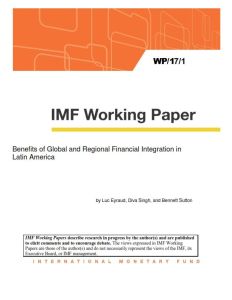Join getAbstract to access the summary!

Join getAbstract to access the summary!
Luc Eyraud, Diva Singh and Bennett Sutton
Benefits of Global and Regional Financial Integration in Latin America
IMF, 2017
What's inside?
Regional integration of Latin American financial institutions could improve economic growth.
Recommendation
Latin American countries, following a roller coaster of economic conditions in the 1980s and 1990s, began allowing global banks into their financial systems in 2000. But the international giants have been pulling out of these markets since the 2008 global crisis. According to this fresh perspective from economists Luc Eyraud, Diva Singh and Bennett Sutton, Latin American nations should seize the opportunity to strengthen their economies by creating regionally integrated financial infrastructures. getAbstract recommends this astute analysis to executives, investors and anyone interested in Latin America’s future.
Summary
About the Authors
Luc Eyraud, Diva Singh and Bennett Sutton are economists at the International Monetary Fund.



















Comment on this summary